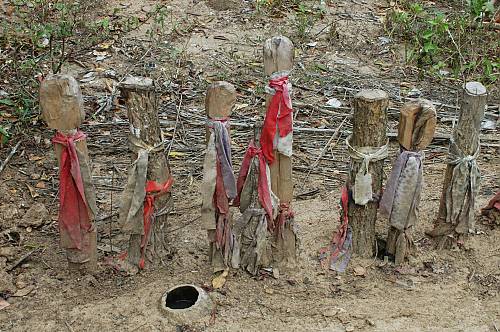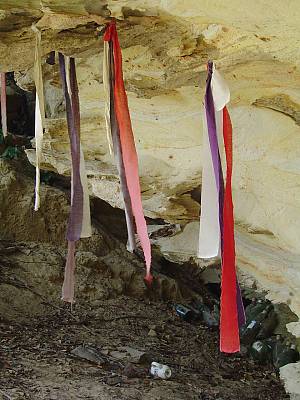Mijikenda textiles


Annotation
Words are historical artifacts which can be analyzed as evidence much like written documents or material records. The words and meanings below all come from historical dictionaries, mostly from the nineteenth century. But they reveal much more ancient historical developments.
In Mijikenda dialects:
Rabai: chitsambi “the open cloth put round the body and tucked in at the bosom according to the fashion of Swahili women. This costume is always adopted by Mijikenda women during the first pregnancy and in such cases of sickness as are ascribed to evil spirits”
Duruma: chitsambi “type of cloth put around waist of woman or burial or for evil spirits”
In Swahili dialects:
Mvita (Mombasa): kitambi “a piece of cloth measuring 5 or 6 mikono [arm’s lengths]…with the people of the interior 4 mikono make a kitambi…Thus the Swahili gain 2 mikono in the interior from every kitambi”
Unjugja (Zanzibar): kitambi “a length or a piece of cloth, usually the kind used for head-wear, as a kind of turban…also worn round the waist and as a loincloth”
*kicambi is the older form of all of the words above, but none of these modern dialects pronounce the word this way. The phonetic shape of the word (or how it sounds) in different languages informs us of this history. In Mijikenda and Mvita (a Mombasa dialect of Swahili), the inherited sound *c will always be attested as ts and t respectively while *ki becomes chi in Mijikenda dialects and remains ki in Swahili. The Mijikenda and Mombasa forms are therefore both derived from the word’s older form, *kicambi. However, in southern Swahili dialects, such as Unguja (spoken in Zanzibar), the word is clearly a loanword from northern Swahili. We know this because in Unjuga, the older sound *c should be pronounced ch. By studying how the word sounds in each of these languages, we can determine that people living in the northern part of the Swahili coast invented this word after northern and southern Swahili dialects had diverged but early enough that it also underwent regular sound changes in Mijikenda dialects. Based on what is known about the history of these dialects, it is likely that the word spread between Mombasa Swahili and Mijikenda in the early-second millennium.
Studying the word’s derivation, meanwhile, informs us of how people living around Mombasa thought about this type of textile. *kicambi is derived from an older root word, *-camb-, which meant “to wash oneself after excreting.” The prefix ki- signifies that the word referred to an object associated with the root while the suffix -i indicates that it is an agent noun. This tells us that etymologically the word’s meaning originally equated to something like an object or instrument that washed one after excreting. By studying the entries above, we can see that both Mijikenda- and Swahili-speaking communities applied this word—which originally referred to a washing instrument—to valued textiles. We can also see how both reworked *kicambi’s meaning over time to suit their own distinctive goals and needs: in the case of Swahili speakers, a trade commodity; and among Mijikenda speakers, cloth with considerable ritual and protective qualities.
The images to the left feature modern textile styles but they offer a good illustration of some of the ritual uses of textiles in Mijikenda communities. The top displays koma memorial posts which are adorned with colorful strips of cloth. The second image shows a muzimu, a natural space where spirits resided which were often located in caves, hollowed tree stumps, or small forest groves. Notice that the cave features strips of colorful cloth along with offerings for the spirits known to inhabit these spaces.
This source is part of the Precolonial Kenya, a Small-Scale History teaching module.
Credits
Images from the National Museums of Kenya via the United Nations Educational, Scientific, and Cultural Organization (UNESCO) https://ich.unesco.org/en/USL/traditions-and-practices-associated-with-the-kayas-in-the-sacred-forests-of-the-mijikenda-00313